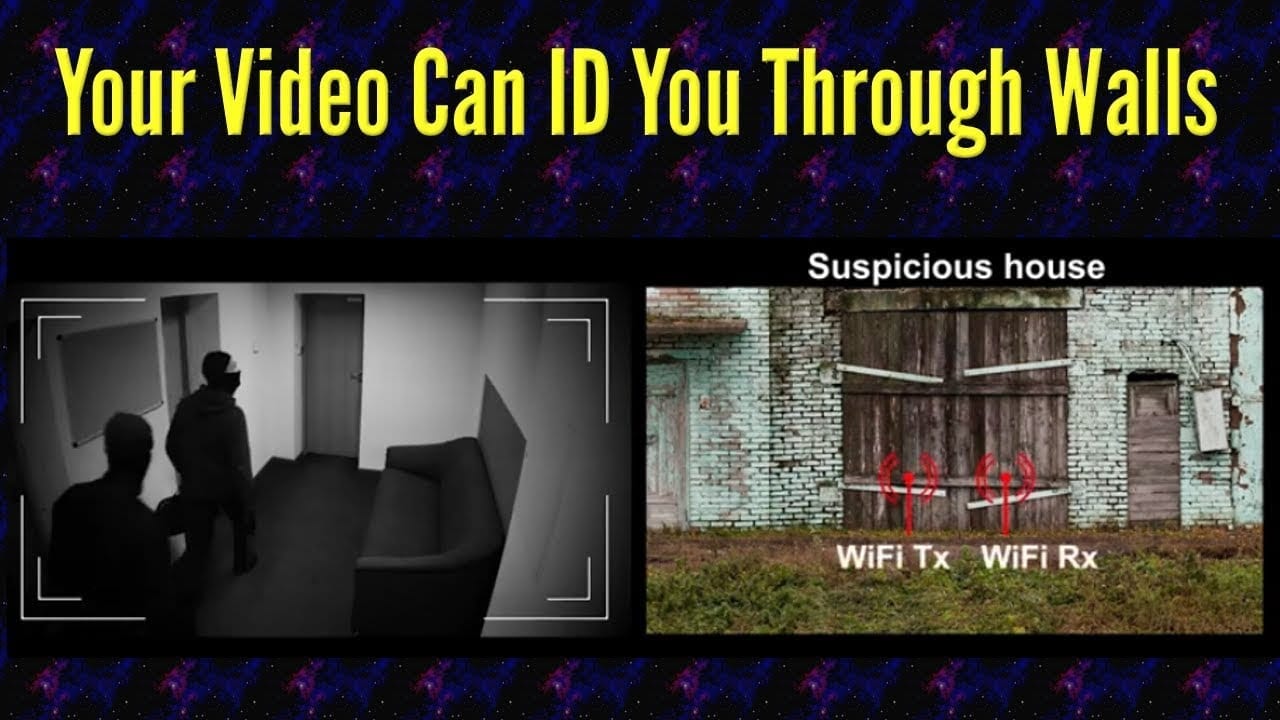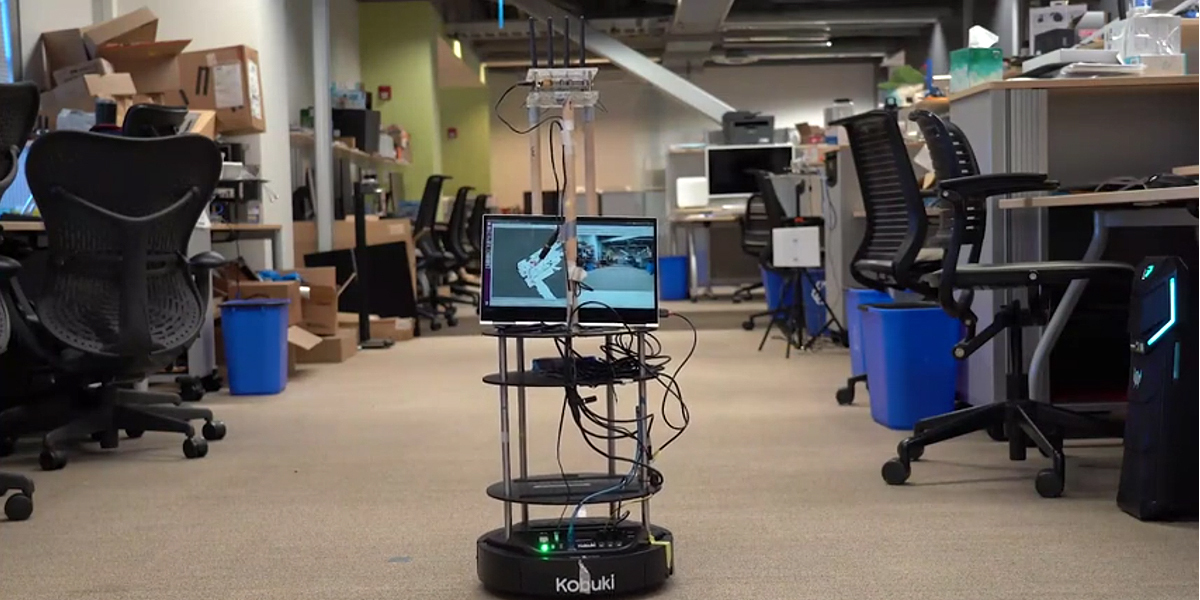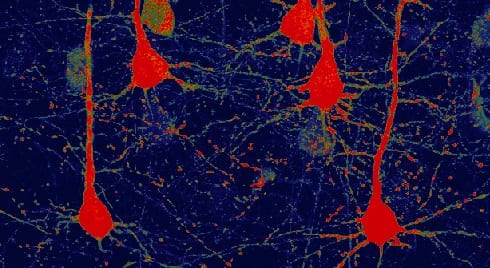
Researchers’ new method enables identifying a person through walls from candidate video footage, using only WiFi.
Researchers in the lab of UC Santa Barbara professor Yasamin Mostofi have enabled, for the first time, determining whether the person behind a wall is the same individual who appears in given video footage, using only a pair of WiFi transceivers outside.
This novel video-WiFi cross-modal gait-based person identification system, which they refer to as XModal-ID (pronounced Cross-Modal-ID), could have a variety of applications, from surveillance and security to smart homes. For instance, consider a scenario in which law enforcement has a video footage of a robbery. They suspect that the robber is hiding inside a house. Can a pair of WiFi transceivers outside the house determine if the person inside the house is the same as the one in the robbery video? Questions such as this have motivated this new technology.
“Our proposed approach makes it possible to determine if the person behind the wall is the same as the one in video footage, using only a pair of off-the-shelf WiFi transceivers outside,” said Mostofi. “This approach utilizes only received power measurements of a WiFi link. It does not need any prior WiFi or video training data of the person to be identified. It also does not need any knowledge of the operation area.”
The proposed methodology and experimental results will appear at the 25th International Conference on Mobile Computing and Networking (MobiCom) on October 22. The project was funded by a pair of grants from the National Science Foundation that focus on through-wall imaging and occupancy assessment.
In the team’s experiments, one WiFi transmitter and one WiFi receiver are behind walls, outside a room where a person is walking. The transmitter sends a wireless signal whose received power is measured by the receiver. Then, given video footage of a person from another area — and by using only such received wireless power measurements — the receiver can determine whether the person behind the wall is the same person seen in the video footage.
This innovation builds on previous work in the Mostofi Lab, which has pioneered sensing with everyday radio frequency signals such as WiFi since 2009.
“However, identifying a person through walls, from candidate video footage, is a considerably challenging problem,” said Mostofi. Her lab’s success in this endeavor is due to the new proposed methodology they developed.
“The way each one of us moves is unique. But how do we properly capture and compare the gait information content of the video and WiFi signals to establish if they belong to the same person?”
The researchers have proposed a new way that, for the first time, can translate the video gait content to the wireless domain.
“Our approach is multi-disciplinary, drawing from areas of both wireless communications and vision,” said Chitra Karanam, one of three Ph.D. students on the project. Given some video footage, the team first utilized a human mesh recovery algorithm to extract the 3D mesh describing the outer surface of the human body as a function of time. They then used Born electromagnetic wave approximation to simulate the RF signal that would have been generated if this person was walking in a WiFi area.
Next they employed their time-frequency processing approach to extract key gait features from both the real WiFi signal (that was measured behind the wall) and the video-based simulated signal. The two signals are then compared to determine if the person in the WiFi area is the same person in the video.
The researchers’ processing pipeline involves a series of mathematical functions, including Short-time Fourier transform and Hermite functions, in order to get the spectrogram of the received signal. “A spectrogram carries the frequency-time content of the signal, which implicitly carries the gait information of the person,” explained Belal Korany, another Ph.D. student involved in the effort.
Several important gait features are then extracted from both spectrograms and properly compared to declare if the person in the video is behind the wall.
“We have tested this technology extensively on our campus,” said Herbert Cai, the third Ph.D. student on the project. The lab has tested their new technology on 1,488 WiFi-video pairs, drawn from a pool of eight people, and in three different behind-wall areas, and achieved an overall accuracy of 84% in correctly identifying the person behind the wall.
Learn more: Your Video Can ID You Through Walls
The Latest on: Identification system
[google_news title=”” keyword=”identification system” num_posts=”10″ blurb_length=”0″ show_thumb=”left”]
via Google News
The Latest on: Identification system
- CBR could test out video identification for cross-border payments - Nabiullinaon April 27, 2024 at 6:59 am
"Video identification, including in experimental mode, can be tested for cross-border payments. We see very big prospects here, of course, it is necessary to move towards this," Nabiullina said.
- Patient-Reported Symptoms via Mobile App May Help Expedite GVHD Identification, Treatmenton April 26, 2024 at 2:01 pm
A feasibility study on the use of a mobile application for patients after undergoing a stem cell transplant may help care teams quickly identify and treat graft-versus-host disease.
- How immune cells communicate to fight viruses: New mouse model enables identification of chemokine producers and sensorson April 25, 2024 at 8:20 am
Chemokines are signaling proteins that orchestrate the interaction of immune cells against pathogens and tumors. To understand this complex network, various techniques have been developed to identify ...
- Airborne single-photon lidar system achieves high-resolution 3D imagingon April 25, 2024 at 7:00 am
Researchers have developed a compact and lightweight single-photon airborne lidar system that can acquire high-resolution 3D images with a low-power laser. This advance could make single-photon lidar ...
- Vietnam Automated Fingerprint Identification Systems Market Glowing Futures The Brightness of Latest Rising Trends Worldwideon April 24, 2024 at 3:46 pm
Report Ocean’s latest analysis delves into the “Vietnam Automated Fingerprint Identification Systems Market” Report from 2024 to 2032, covering an array of market facets such as characteristics, size, ...
- Global Automatic Identification System Market Size To Worth USD 447.2 Million By 2033 | CAGR Of 5.34%on April 23, 2024 at 12:00 pm
The Global Automatic Identification System Market Size was valued at USD 265.8 Million in 2023 and the Worldwide Automatic Identification System Market Size is Expected to reach USD 447.2 Million by ...
- Brazil to update OPV radar systemson April 23, 2024 at 12:07 am
As part of an effort to update its Amazonas-class offshore patrol vessels (OPVs), the Brazilian Navy is acquiring a new air and surface search radar with ...
- Alameda Health System Needs Immediate Assistance with Patient Identificationon April 19, 2024 at 12:33 pm
Alameda Health System needs help identifying a patient who arrived at the Wilma Chan Highland Hospital Campus on March 15, 2024, without identification.
- Legal or illegal? How NC’s cannabis laws are impacting the criminal systemon April 18, 2024 at 2:00 am
Though North Carolina has loosened some of its cannabis laws in recent years, the current legislation is having an impact on the state’s criminal system.
- ‘Indefinite’ Defense Department IDs Inconvenience Air Travelers, May Be Dropped as Acceptable Identificationon April 16, 2024 at 1:29 pm
The Transportation Security Administration's Credential Authentication Technology reads the cards' INDEF date field as "EXPIRED," a chronic problem that may be resolved by dropping DoD IDs as ...
via Bing News




